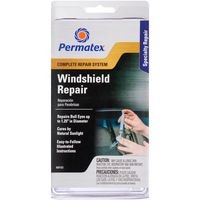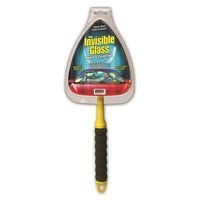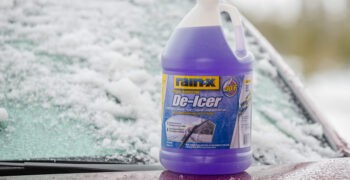Is that small crack in your auto glass stressing you out? Auto glass repair for small cracks is not only feasible but also an essential step in maintaining your vehicle’s safety and value. At AUTO-REPAIR-TRAINING.EDU.VN, we provide comprehensive guidance on auto glass repair, empowering you with the knowledge and skills for both DIY fixes and informed decisions about professional services. Learn about windshield crack repair kits, glass repair costs, and detailed step-by-step instructions to ensure a successful repair.
Contents
- 1. Why Early Auto Glass Repair for Small Cracks Matters?
- 2. How to Determine the Size and Severity of the Crack
- 2.1. Assessing Crack Size
- 2.2. When to Call a Professional
- 3. Selecting the Right Auto Glass Repair Kit for Small Cracks
- 3.1. Key Features to Consider
- 4. Essential Tools and Materials for Auto Glass Repair
- 5. Prioritizing Safety: Essential Precautions Before You Start
- 6. Step-by-Step Guide: How to Fix Small Auto Glass Cracks
- 6.1. Step 1: Clean the Area
- 6.2. Step 2: Apply the Patch and Pedestal
- 6.3. Step 3: Use the Included Epoxy Resin
- 6.4. Step 4: Wait for Air Bubbles to Escape
- 6.5. Step 5: Remove the Syringe and Pedestal
- 6.6. Step 6: Use the Curing Strip
- 6.7. Step 7: Remove Excess Epoxy
- 7. Post-Repair Inspection and Care
- 8. Common Pitfalls to Avoid During DIY Auto Glass Repair
- 9. How to Ensure Proper Curing for Long-Lasting Results
- 10. Understanding the Cost of Auto Glass Repair
- 10.1. DIY Repair Kits vs. Professional Services
- 10.2. Factors Affecting Professional Repair Costs
- 10.3. Insurance Coverage for Auto Glass Repair
- 11. Long-Term Maintenance Tips for Auto Glass
- 12. When to Consider Windshield Replacement Instead of Repair
- 12.1. Size and Location of the Damage
- 12.2. Structural Integrity
- 12.3. Insurance Requirements
- 13. Finding Reliable Auto Glass Repair Services
- 14. Auto Glass Repair for Small Cracks and Environmental Factors
- 14.1. Temperature Fluctuations
- 14.2. UV Radiation
- 14.3. Road Debris
- 14.4. Chemical Exposure
- 15. Staying Informed: Trends in Auto Glass Technology
- 15.1. Advanced Driver Assistance Systems (ADAS)
- 15.2. Acoustic Windshields
- 15.3. Heads-Up Displays (HUD)
- 16. How AUTO-REPAIR-TRAINING.EDU.VN Can Help
- 16.1. Comprehensive Training Programs
- 16.2. Expert Advice and Support
- 16.3. Resources and Tools
- 17. FAQs About Auto Glass Repair Small Crack
- 1. Can I fix a windshield crack if it’s raining outside?
- 2. How long does a windshield crack repair last?
- 3. Is it safe to drive immediately after repairing a windshield crack?
- 4. What size of cracks can be fixed with a DIY kit?
- 5. Do windshield repair kits work on all types of glass?
- 6. How can I prevent cracks from spreading in my windshield?
- 7. What are the signs that a windshield crack cannot be repaired and needs replacement?
- 8. Can I get my windshield repair covered by insurance?
- 9. What should I do if the repair kit doesn’t completely fix the crack?
- 10. Are there any special considerations for repairing windshields with rain sensors or ADAS features?
- 18. Take the Next Step with AUTO-REPAIR-TRAINING.EDU.VN
1. Why Early Auto Glass Repair for Small Cracks Matters?
Addressing small cracks in your auto glass promptly is crucial for several reasons. What starts as a minor chip can quickly spread into a larger crack due to temperature fluctuations, vibrations, or the everyday stress of driving. Failing to address these small issues can compromise your safety and lead to more costly repairs down the line.
- Structural Integrity: Untreated cracks weaken the windshield’s structural integrity, diminishing its effectiveness in protecting you during an accident.
- Visibility: Expanding cracks can obstruct your view, increasing the risk of accidents.
- Cost Savings: Early repairs prevent further deterioration, saving you money on more extensive repairs or complete windshield replacements.
 windshield repair kits
windshield repair kits
2. How to Determine the Size and Severity of the Crack
Before diving into any repair, accurately assessing the damage is key. Here’s how to determine if a DIY repair is suitable or if professional intervention is necessary.
2.1. Assessing Crack Size
- Small Chips: Chips smaller than a quarter are generally suitable for DIY repair kits.
- Small Cracks: Cracks shorter than 3 inches can typically be fixed with an epoxy repair kit.
- Larger Damage: For cracks longer than 3 inches or larger chips, professional repair or windshield replacement is recommended.
2.2. When to Call a Professional
If the damage exceeds the limitations of standard repair kits, consult with a professional. Attempting to repair excessively large damage with a kit can compromise the windshield’s integrity.
3. Selecting the Right Auto Glass Repair Kit for Small Cracks
Choosing the appropriate repair kit is essential for a successful DIY auto glass repair. Here’s what to look for:
- Cost: Compare prices from various brands to find a kit that fits your budget.
- Crack Size Compatibility: Ensure the kit is designed for the size of the crack or chip you’re addressing.
- Expiration Date: Epoxy resins have expiration dates. Use a kit that is relatively fresh (ideally less than 6 months old) for optimal adhesion.
- Curing Steps: Evaluate the complexity of the curing process and ensure you have the necessary tools and conditions.
3.1. Key Features to Consider
When comparing auto glass repair kits, consider these features to ensure you select a high-quality option:
- Ease of Use: Opt for kits with straightforward instructions.
- Completeness: Ensure the kit includes all necessary components, such as resin, applicator, and curing strips.
- Customer Reviews: Read reviews to gauge the kit’s effectiveness and reliability.
4. Essential Tools and Materials for Auto Glass Repair
Before starting your auto glass repair, gather the necessary tools and materials to ensure a smooth and efficient process. Here’s a checklist:
- Auto Glass Repair Kit
- Razor Blade or Utility Knife
- Glass Cleaner
- Microfiber Cloth
- Pin or Needle
- Curing Light or UV Lamp
- Masking Tape
 winshield cleaning tool
winshield cleaning tool
5. Prioritizing Safety: Essential Precautions Before You Start
Safety should always be your top priority when repairing auto glass. Here are some essential precautions to take:
- Wear Gloves: Protect your hands from cuts caused by sharp edges of the glass.
- Ventilation: Use epoxy resin in a well-ventilated area.
- Protective Eyewear: Wear safety glasses to prevent eye irritation from resin.
- First Aid: In case of skin or eye contact, rinse thoroughly and seek medical advice if necessary.
By taking these precautions, you can safely complete the repair without risking injury.
6. Step-by-Step Guide: How to Fix Small Auto Glass Cracks
Follow these detailed steps to effectively repair small cracks in your auto glass.
6.1. Step 1: Clean the Area
Thoroughly clean the area around the crack or chip to remove any dirt or debris. Use a microfiber towel and a small amount of rubbing alcohol to wipe the surface. Ensure the area is completely dry before proceeding.
6.2. Step 2: Apply the Patch and Pedestal
Remove the paper backing from the patch and align it with the damaged area on your windshield. Center the patch over the damage and press it onto the exterior of the glass. Most kits include a pedestal, which is a molded plastic piece with an angled tube for easy epoxy application. Line up the tabs and press the pedestal against the adhesive.
6.3. Step 3: Use the Included Epoxy Resin
Fill the pedestal with liquid resin. Some resins require mixing, while others come pre-mixed. Use the syringe to compress the resin completely down into the pedestal. Hold the pedestal carefully as you pull back up on the plunger to create a vacuum.
6.4. Step 4: Wait for Air Bubbles to Escape
Watch for signs of air bubbles escaping from the cracked area. Wait for the time recommended in the repair kit instructions (usually 1-10 minutes) until no more air bubbles appear.
6.5. Step 5: Remove the Syringe and Pedestal
After all air bubbles have been removed, push the syringe plunger down again to force the remaining resin into the crack. Remove the syringe, patch, and pedestal carefully. Apply an additional drop of resin to the top of the crack to ensure there are no dimples or dents.
6.6. Step 6: Use the Curing Strip
Place the curing strip on the crack carefully to avoid trapping any air bubbles. Hold the strip in place and squeegee out any remaining air bubbles. Let the strip rest for the recommended time before scraping it off with a razor blade.
6.7. Step 7: Remove Excess Epoxy
Scrape off any remaining resin with a razor blade, taking care to avoid fingerprints or damage to your windshield. The result should be a smooth, clear windshield.
7. Post-Repair Inspection and Care
After completing the repair, inspect the area closely to ensure the crack is fully filled and the surface is smooth. Clean the windshield and avoid washing the car for at least 24 hours to allow the resin to fully cure.
8. Common Pitfalls to Avoid During DIY Auto Glass Repair
To ensure a successful repair, be aware of these common mistakes:
- Skipping Cleaning: Always clean the area thoroughly before applying the patch.
- Using Expired Kits: Check the expiration date of the epoxy resin.
- Ignoring Instructions: Follow the repair kit instructions precisely.
- Rushing the Curing Process: Allow the resin to cure fully before removing the curing strip.
- Applying Uneven Pressure: Apply even pressure when using the syringe to avoid damaging the windshield.
9. How to Ensure Proper Curing for Long-Lasting Results
The curing process is crucial for ensuring a durable auto glass repair. Here are some tips for proper curing:
- Temperature: Resin cures best in warm conditions, ideally between 50°F and 75°F.
- Sunlight: Allow sunlight for curing, but avoid direct sunlight during application.
- UV Lamp: Some repair kits include a UV lamp for curing. If using natural sunlight, allow more time on overcast days.
- Avoid Disturbing: Avoid touching the crack or removing curing strips before the resin has fully cured.
- Excess Resin: Wipe away excess resin around the crack before curing.
 AutoZone associate installing new blades as the customer
AutoZone associate installing new blades as the customer
10. Understanding the Cost of Auto Glass Repair
The cost of auto glass repair can vary widely depending on several factors. Understanding these factors can help you make informed decisions about whether to repair the glass yourself or seek professional help.
10.1. DIY Repair Kits vs. Professional Services
DIY repair kits are a cost-effective solution for small cracks and chips, typically ranging from $10 to $30. These kits include all the necessary materials to perform a basic repair. However, for more extensive damage or if you are not comfortable performing the repair yourself, professional services may be a better option. Professional auto glass repair services can range from $50 to $150, depending on the extent of the damage and the type of vehicle.
10.2. Factors Affecting Professional Repair Costs
Several factors can influence the cost of professional auto glass repair services:
- Size and Location of the Crack: Larger cracks and those located in critical areas of the windshield may require more extensive repairs, increasing the cost.
- Vehicle Type: The make and model of your vehicle can affect the cost of auto glass repair, as some vehicles may require specialized glass or installation techniques.
- Complexity of the Repair: If the repair requires additional steps, such as removing and reinstalling the windshield, the cost will be higher.
- Geographic Location: Repair costs can vary depending on your geographic location, with urban areas often having higher prices than rural areas.
10.3. Insurance Coverage for Auto Glass Repair
Many auto insurance policies offer coverage for auto glass repair, often with a low or waived deductible. Check your insurance policy to understand your coverage options. Some insurance companies may require you to use a specific auto glass repair shop, while others allow you to choose your own provider. Keep in mind that filing a claim for auto glass repair may affect your insurance premiums, so it’s essential to weigh the costs and benefits before proceeding.
11. Long-Term Maintenance Tips for Auto Glass
Proper maintenance is essential to extend the life of your auto glass and prevent further damage. Here are some tips to keep your auto glass in good condition:
- Avoid Extreme Temperature Changes: Rapid temperature changes can cause stress on the glass, leading to cracks and chips. Avoid pouring hot water on a frozen windshield in the winter.
- Park in Covered Areas: When possible, park your vehicle in covered areas to protect it from the elements, such as hail, tree branches, and direct sunlight.
- Regular Cleaning: Clean your windshield regularly to remove dirt, debris, and bug splatters that can scratch the glass.
- Use Quality Wiper Blades: Replace your wiper blades every six months to ensure they effectively clear the windshield without scratching the glass.
- Inspect Regularly: Regularly inspect your windshield for small cracks and chips. Addressing minor damage promptly can prevent it from spreading and requiring more extensive repairs.
 Rain X deicer on hood in front of iced over windshield
Rain X deicer on hood in front of iced over windshield
12. When to Consider Windshield Replacement Instead of Repair
While auto glass repair is an effective solution for small cracks and chips, there are situations where windshield replacement is necessary. Here are some factors to consider:
12.1. Size and Location of the Damage
- Large Cracks: Cracks longer than 12 inches typically require windshield replacement.
- Cracks in Critical Areas: Cracks located in the driver’s line of sight can impair visibility and should be addressed with a windshield replacement.
- Multiple Cracks: If your windshield has multiple cracks or chips, it may be more cost-effective to replace the entire windshield.
12.2. Structural Integrity
If the damage has compromised the structural integrity of the windshield, replacement is necessary to ensure your safety in the event of an accident.
12.3. Insurance Requirements
Some insurance companies may require windshield replacement if the damage meets certain criteria. Check your insurance policy to understand their requirements.
13. Finding Reliable Auto Glass Repair Services
When professional auto glass repair is needed, it’s important to find a reputable service provider. Here are some tips for finding reliable auto glass repair services:
- Check Online Reviews: Look for auto glass repair shops with positive reviews on sites like Google, Yelp, and the Better Business Bureau.
- Ask for Recommendations: Ask friends, family, and colleagues for recommendations.
- Verify Certifications: Ensure the repair technicians are certified and trained to perform auto glass repairs.
- Check for Warranties: Choose a repair shop that offers a warranty on their work.
- Compare Quotes: Get quotes from multiple repair shops to ensure you’re getting a fair price.
14. Auto Glass Repair for Small Cracks and Environmental Factors
Environmental factors play a significant role in the lifespan and condition of auto glass. Understanding these factors can help you take proactive measures to protect your windshield.
14.1. Temperature Fluctuations
Extreme temperature changes can cause stress on the glass, leading to cracks and chips. Avoid exposing your windshield to rapid temperature changes, such as pouring hot water on a frozen windshield.
14.2. UV Radiation
Prolonged exposure to UV radiation can cause the plastic layer in laminated windshields to degrade, leading to discoloration and reduced structural integrity. Park your vehicle in covered areas to minimize UV exposure.
14.3. Road Debris
Rocks, gravel, and other road debris can cause chips and cracks in your windshield. Maintain a safe distance from other vehicles and avoid driving on unpaved roads when possible.
14.4. Chemical Exposure
Exposure to harsh chemicals, such as road salt and cleaning agents, can damage the surface of your windshield. Use quality glass cleaners and avoid using abrasive materials that can scratch the glass.
15. Staying Informed: Trends in Auto Glass Technology
The auto glass industry is constantly evolving, with new technologies and innovations aimed at improving the safety, durability, and functionality of windshields. Staying informed about these trends can help you make informed decisions about auto glass repair and replacement.
15.1. Advanced Driver Assistance Systems (ADAS)
Many modern vehicles are equipped with ADAS, which rely on sensors and cameras mounted on the windshield to provide features such as lane departure warning, adaptive cruise control, and automatic emergency braking. When replacing a windshield on a vehicle with ADAS, it’s essential to have the system recalibrated to ensure it functions properly.
15.2. Acoustic Windshields
Acoustic windshields are designed to reduce noise levels inside the vehicle, providing a quieter and more comfortable driving experience. These windshields use a special layer of sound-absorbing material to dampen noise from outside the vehicle.
15.3. Heads-Up Displays (HUD)
Some vehicles feature HUDs, which project information onto the windshield, allowing drivers to see important data without taking their eyes off the road. When replacing a windshield on a vehicle with HUD, it’s essential to use a windshield that is specifically designed for HUD systems.
16. How AUTO-REPAIR-TRAINING.EDU.VN Can Help
At AUTO-REPAIR-TRAINING.EDU.VN, we are committed to providing you with the knowledge and resources you need to make informed decisions about auto glass repair and maintenance. Whether you’re a DIY enthusiast or prefer to seek professional help, we’re here to support you every step of the way.
16.1. Comprehensive Training Programs
We offer comprehensive training programs designed to equip you with the skills and knowledge needed to perform auto glass repairs and maintenance effectively. Our programs cover a wide range of topics, including:
- Auto Glass Repair Techniques
- Windshield Replacement Procedures
- ADAS Calibration
- Customer Service and Business Management
16.2. Expert Advice and Support
Our team of experienced technicians and industry experts is available to provide you with expert advice and support. Whether you have questions about auto glass repair techniques, need help finding reliable service providers, or want to stay informed about the latest trends in the auto glass industry, we’re here to help.
16.3. Resources and Tools
We provide a variety of resources and tools to help you succeed in the auto glass industry, including:
- Detailed Repair Guides
- Product Reviews
- Industry News and Updates
- Business Resources
17. FAQs About Auto Glass Repair Small Crack
1. Can I fix a windshield crack if it’s raining outside?
No, it’s not recommended to fix a windshield crack in the rain because moisture can interfere with the resin bonding. The surface must be dry for a successful repair.
2. How long does a windshield crack repair last?
If done properly, a windshield crack repair can last for years, often the life of the windshield, provided no further damage occurs.
3. Is it safe to drive immediately after repairing a windshield crack?
Yes, it’s generally safe to drive immediately after repairing a windshield crack, but you should allow the resin to fully cure according to the kit’s instructions before doing so.
4. What size of cracks can be fixed with a DIY kit?
DIY kits can typically fix cracks up to six inches long and small chips, but larger cracks may require professional repair or windshield replacement.
5. Do windshield repair kits work on all types of glass?
Windshield repair kits are designed for automotive glass and may not work as effectively on other types of glass, such as tempered or laminated glass used in other applications.
6. How can I prevent cracks from spreading in my windshield?
To prevent cracks from spreading, avoid extreme temperature changes, drive carefully on rough roads, and repair any small cracks or chips as soon as possible.
7. What are the signs that a windshield crack cannot be repaired and needs replacement?
Signs include cracks longer than 12 inches, cracks in the driver’s line of sight, multiple cracks, and damage that has compromised the structural integrity of the windshield.
8. Can I get my windshield repair covered by insurance?
Yes, many auto insurance policies cover auto glass repair, often with a low or waived deductible. Check your policy for details.
9. What should I do if the repair kit doesn’t completely fix the crack?
If the repair kit doesn’t completely fix the crack, consult with a professional auto glass repair service for further assistance.
10. Are there any special considerations for repairing windshields with rain sensors or ADAS features?
Yes, windshields with rain sensors or ADAS features may require recalibration after repair or replacement to ensure proper functionality.
18. Take the Next Step with AUTO-REPAIR-TRAINING.EDU.VN
Ready to tackle that small crack in your auto glass or seeking professional guidance? AUTO-REPAIR-TRAINING.EDU.VN is your go-to resource for expert advice, comprehensive training, and practical solutions. Whether you’re looking to enhance your DIY skills or start a career in auto glass repair, we have the resources to help you succeed.
Contact us today for personalized guidance and support:
- U.S. Office: 200 N Michigan Ave, Suite 1500, Chicago, IL 60601, United States
- WhatsApp: +1 (641) 206-8880
- Website: AUTO-REPAIR-TRAINING.EDU.VN
Don’t let a small crack turn into a major problem. Contact AUTO-REPAIR-TRAINING.EDU.VN and take the first step towards a safer, clearer view of the road ahead.